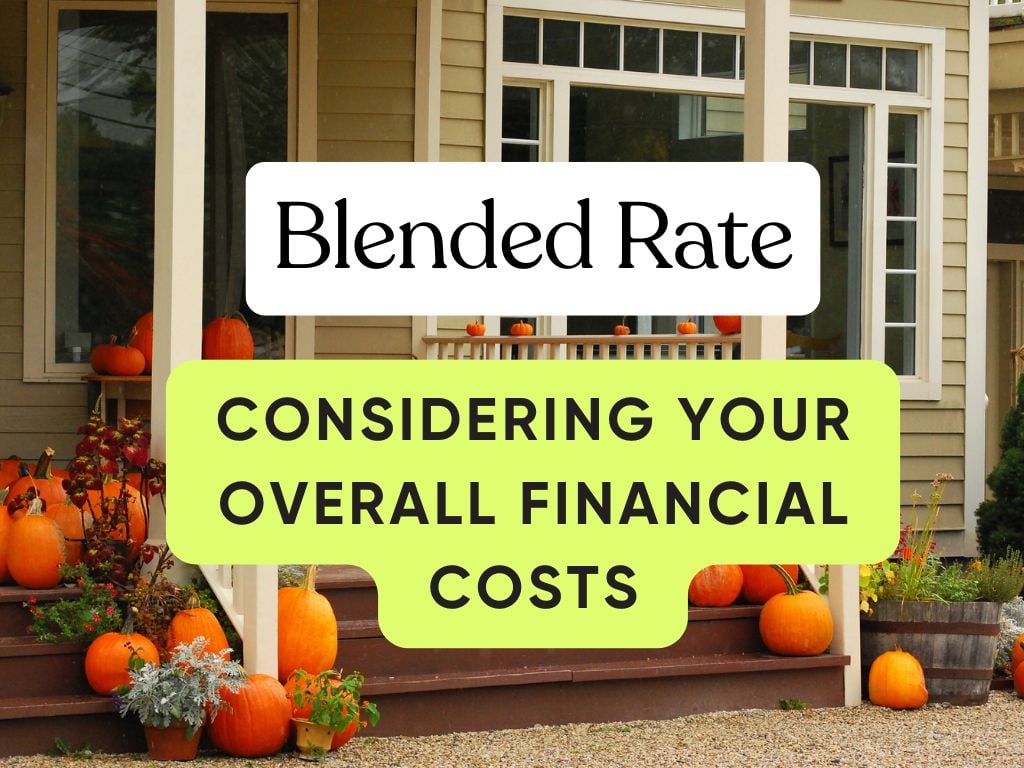If you’ve been following the housing market and interest rate trends, you might be feeling hesitant about selling your current home and buying a new one. After all, you probably locked in a historically low mortgage rate, and the thought of trading that for today’s higher rates might seem daunting. But here’s something that many homeowners aren’t considering: while your mortgage rate is low, the other debts you carry—like credit cards, student loans, and car payments—could be eating up your finances, leaving you financially stretched.
This is where the idea of a “blended rate” comes into play. Instead of focusing solely on your low mortgage interest rate, think about your overall financial picture. When you add up all your debts and the rates on those, your actual financial burden might be higher than you realize. By using the equity in your home to consolidate those higher-interest debts into a new mortgage (even at a higher interest rate than your current mortgage), you might be able to reduce your total monthly payments and improve your financial situation.
Tapping Into Your Home Equity: A Growing Resource for Many Homeowners
One key factor that many people don’t realize is just how much equity they have built up in their home. According to recent data, the average American homeowner with a mortgage has around $300,000 in equity. That’s a significant amount of untapped wealth that could be working for you rather than sitting dormant. With home values increasing steadily over the past several years, homeowners have seen their equity rise substantially, but many are still carrying high-interest debts like credit cards, student loans, or car loans, which could be consolidated into a new mortgage for a better overall financial outcome.
The Blended Rate in Action: A Client’s Story
Let me tell you about one of my clients who was in a similar situation. She had a fantastic interest rate on her current home, but she also had several other debts—credit card balances at 18%, a car loan at 7%, and student loans. Each month, she was juggling multiple payments, and despite her low mortgage, the other debts were overwhelming her. She was reluctant to sell and move into a new home because she didn’t want to give up her low mortgage rate.
But when we looked at her overall financial picture, a different story emerged. With the equity she had built up in her current home, we were able to explore options for selling and buying a new property while consolidating her other debts into a single mortgage at a slightly higher rate. Yes, her housing payment went up a bit, but because we eliminated those high-interest debts, her total monthly outlay decreased significantly. She was able to free herself from the stress of multiple payments and gain more control over her finances.
How to Think About Your Blended Rate
If you’re sitting on a good amount of home equity and you’re carrying high-interest debt, it’s worth considering the potential benefits of selling your current home and consolidating everything into one mortgage. Even if the interest rate on your new mortgage is higher than what you have now, it might be lower than what you’re paying on other debts. This blended rate approach gives you a clearer picture of your entire financial situation, not just your mortgage.
Here’s what you should ask yourself:
- Do I have credit card debt, car loans, or student loans with high interest rates?
- Is my monthly financial burden spread out across multiple payments?
- Could consolidating my debt into a new mortgage help reduce my overall financial stress?
If you’re nodding along to these questions, it might be time to explore your options.
Let’s Talk About Your Situation
If this scenario sounds familiar, let’s chat. I’ve worked with many clients in similar situations, and I can help connect you with a lender who will take a holistic look at your financial picture, not just your mortgage rate. Together, we can explore the possibilities, weigh the pros and cons, and find a solution that works for your unique situation.
Sometimes, the right move isn’t about keeping that low interest rate—it’s about freeing yourself from high-interest debt and finding financial peace of mind. Reach out to me, and we’ll work through it, step by step.



